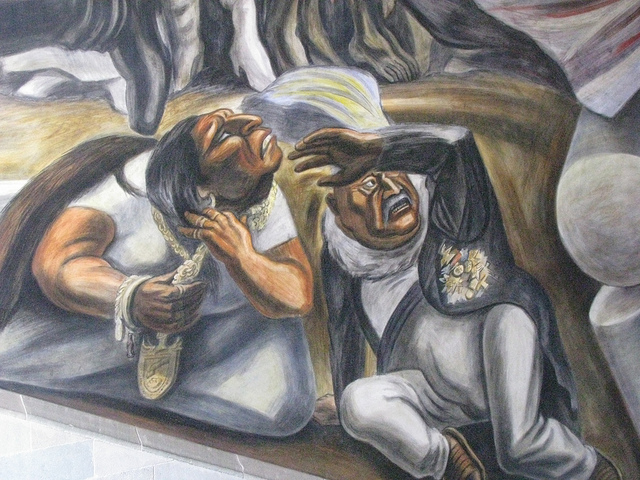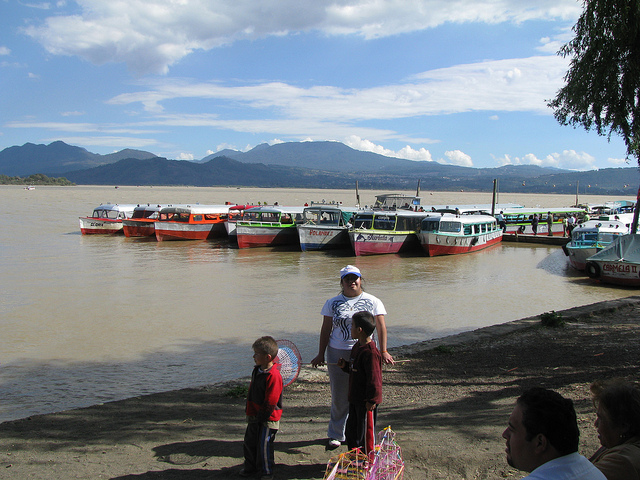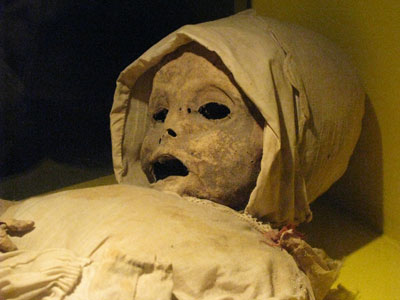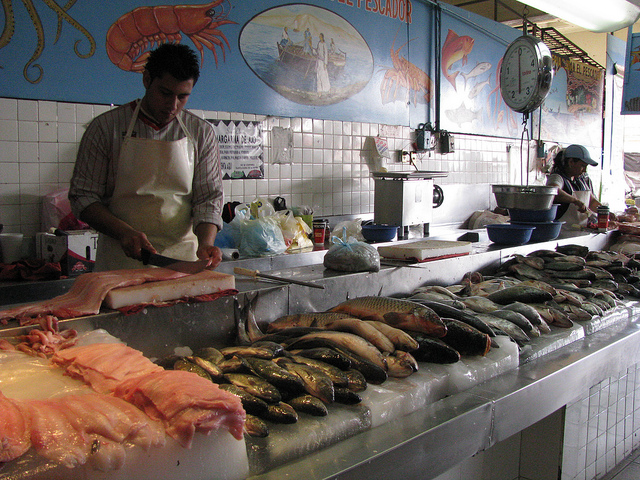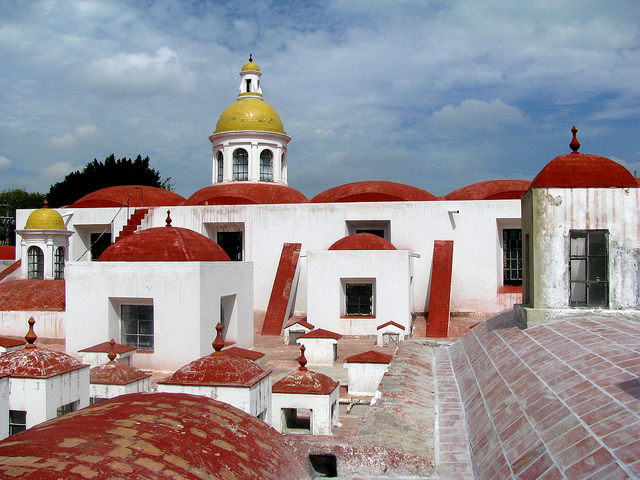After this interesting studio tour we got back in our van and started driving downtown. Guanajuato’s topography is very unique as the city is embedded among a series of hills and mountain slopes. What is truly unique about this city are the tunnels that run underneath different parts of the city. The Guanajuato River used to flow in tunnels underneath the city, but after engineers rerouted the river into underground caverns in the middle of the twentieth century, these tunnels have been converted into roadways. I was fascinated by the cobble-stoned tunnels that carry most of the traffic through the city. Due to a general lack of space throughout the city, many people park their cars underground beside the roadways, and many people walk through the tunnels at all hours of the day.

Tunnels criss-cross Guanajuato
Our short drive took us to one of Guanajuato’s main attractions: the Alhóndiga de Granaditas, an old grain storage building that was built between 1798 and 1809. With its almost square shape, its impressive size and its small windows the Alhóndiga is more reminiscent of a medieval castle. Based on its fortification-like architecture this building played a key role during the Mexican War of Independence in 1810.
When the insurgent troops of Miguel Hidalgo approached Guanajuato, the local Spanish colonial rulers barricaded themselves inside the Alhóndiga and thought themselves safe from the attack of the insurgents. Local miner Juan José de los Reyes Martinez, also called El Pípila, decided to break down and torch the door of the Alhóndiga, protected by a large stone on his back from the muskets of the Spanish troops. Once the door had burned down, the insurgents stormed the Alhóndiga and killed all the Spanish soldiers and civilians that had sought shelter inside.

Interior courtyard of the Alhóndiga de Granaditas
In this manner El Pípila had become one of the most important independence war heroes in Mexico and a huge monument was erected in his honour on a hill overlooking the city of Guanajuato. The nickname “El Pípila”, which literally means “turkey hen”, had actually been given to him because he had been born with mental and physical birth defects. But based on his courage and strength he became one of the most important heroes of Mexico’s War of Independence.
Today the Alhóndiga de Granaditas holds a large museum, the Museo Regional La Alhóndiga de Granaditas, that documents local history, from Prehispanic Meso-American art to the colonial era that was dominated by the Spanish, the local history of silver mining, to the making of modern Mexico from the War of Independence in 1810 to the long-ruling dictator Porfirio Diaz who controlled the country from 1876 to 1911. The Alhóndiga is also used as a large open-air auditorium for live performances during the annual International Cervantino Festival.

Detail of mural in the staircases of the Alhóndiga de Granaditas
One of the most stunning features of the Alhóndiga are the murals by José Chavez Morado painted in two stairwells in the 1950s and 1960s. They illustrate historic events and the struggles of the Mexican people for independence. One of the most striking images is that of the severed head of Father Miguel Hidalgo, the leader of the Independence Movement, who was executed by the Spaniards in 1811 for instigating the revolt against the Spanish a year earlier. After he was executed by the shot of a rifle, he was decapitated and his head and the heads of three other independence fighters were displayed on the four corners of the Alhóndiga for ten years, until the country achieved independence from Spain in 1821. Today Miguel Hidalgo is celebrated as the “Father of the Nation”, and every month a lighting ceremony inside the Alhóndiga remembers his contribution to the independence of Mexico.

Father Miguel Hidalgo was executed by the Spanish
Sujei and I then set off to explore our next destination, the Mercado Hidalgo, Guanajuato’s historic municipal market. On our way there, we stopped and walked through a church called the Parroquia de la Immacolada Corazon de Maria, an example of Mexican baroque.
Walking through the busy streets of Guanajuato we arrived at the Mercado Hidalgo, which was built in the early 1900s and inaugurated by then President Porfirio Diaz in 1910. The building is reminiscent of a train station and was constructed on the location of an old bullring. The domed roof is held up by iron support beams, and a gallery on the second floor allows a great view over the dozens of merchant’s stands.

Interior of the Mercado Hidalgo
The main floor mostly holds stands for food-related products, from meat to vegetables and fish, eggs, tortillas and many other items. The upstairs gallery holds stalls for clothing, souvenirs, pottery, woodcarvings, clay figurines and many more. Religious art as well as the typically Mexican skull figures (“calaveras”, general representations of skulls in connection with the Day of the Dead, and “catrinas”, the more elegant female version with long dresses and large hats) add more colour to this bustling marketplace.

“Catrinas” at the Mercado Hidalgo
After a very busy morning we were finally starting to head towards a restaurant to have a much deserved lunch before we would continue our explorations in the afternoon.
